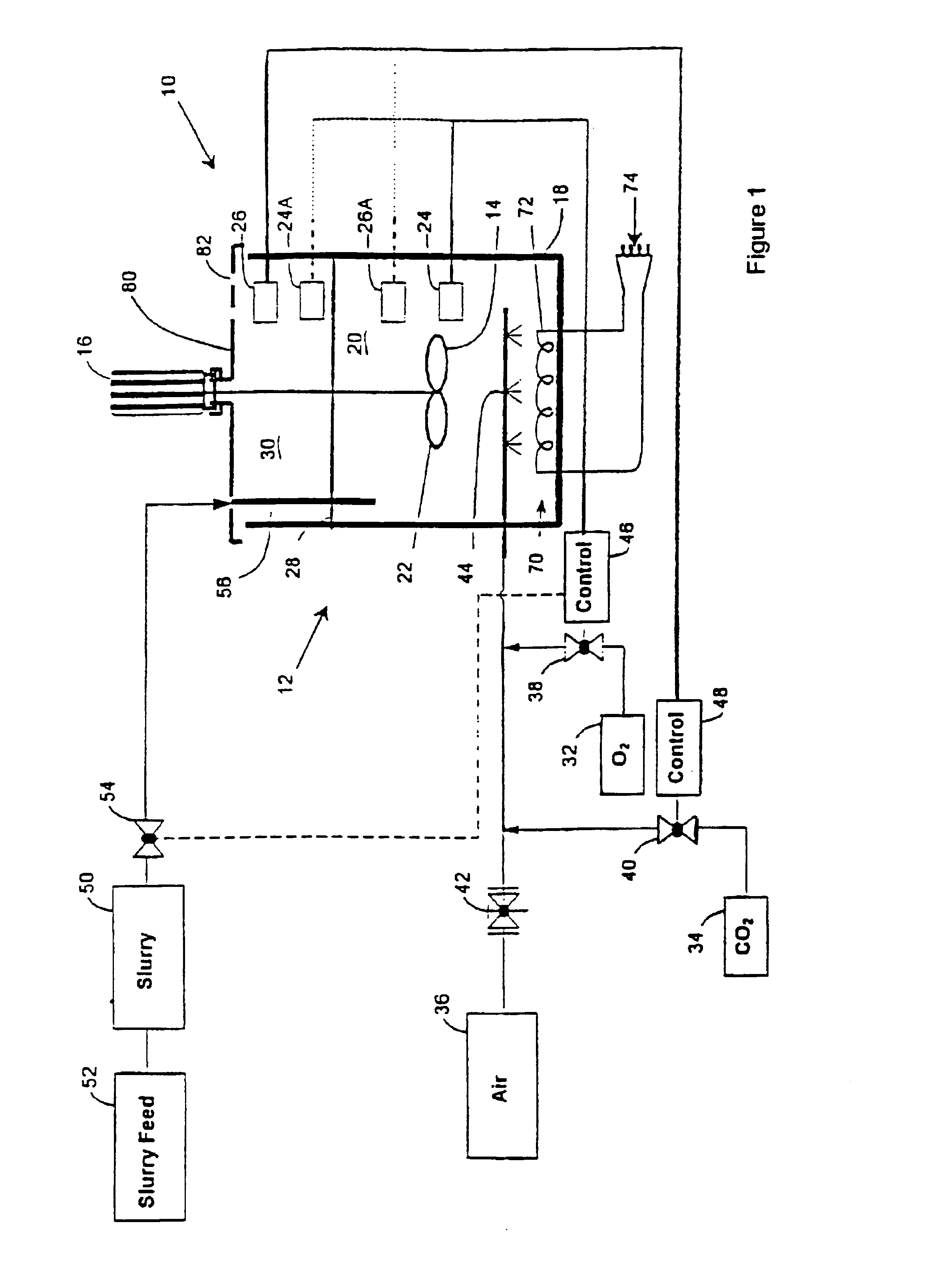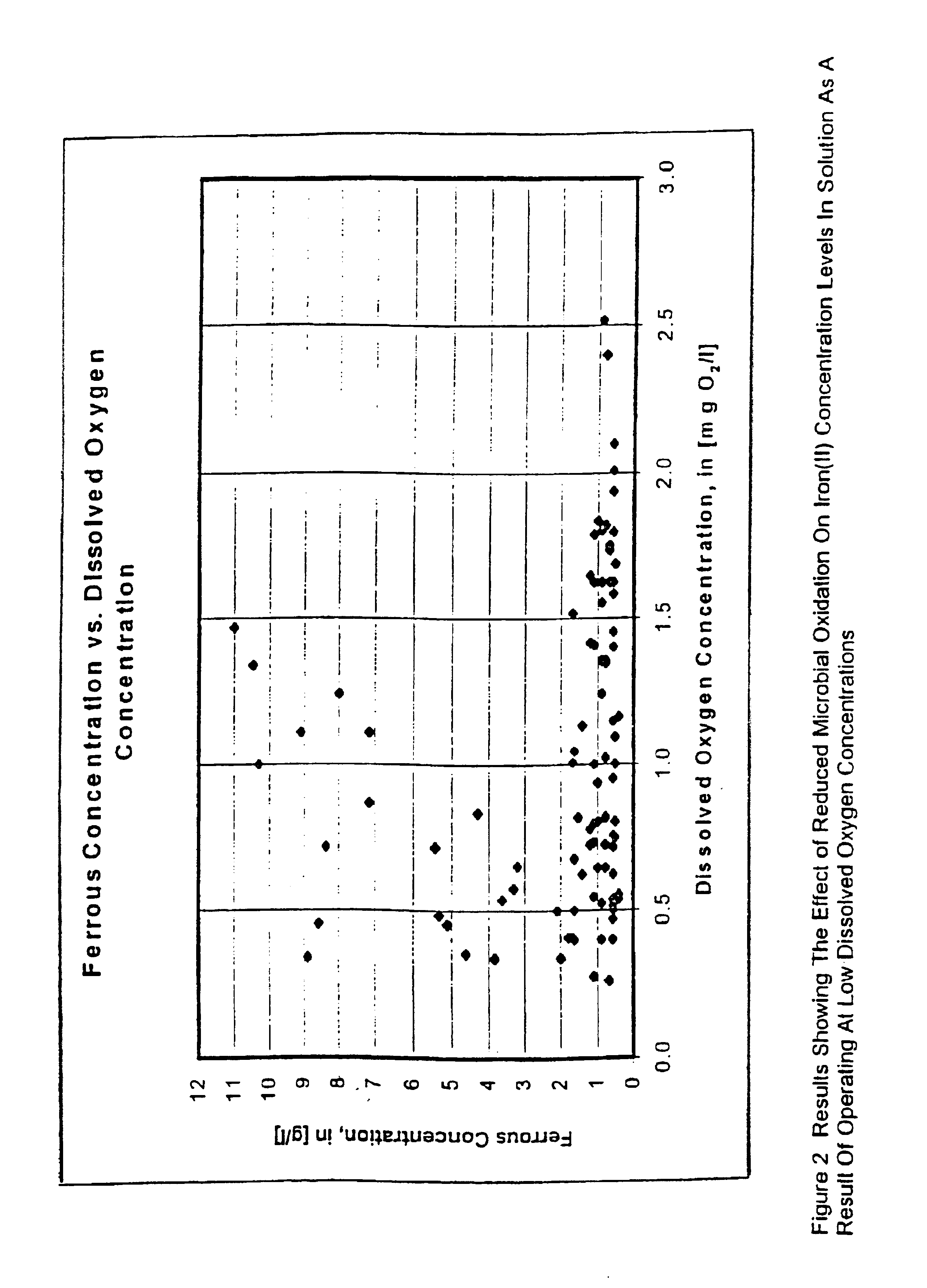Recovery of precious metal from sulphide minerals by bioleaching
a technology of precious metals and bioleaching, which is applied in the direction of inorganic chemistry, manufacturing converters, blast furnace components, etc., can solve the problems of limited oxygen solubility, limited sulphide mineral oxidation rate, and limited leaching rate, so as to reduce specific power requirements for oxidation, high leaching rate, and high specific sulphide oxidation duty
- Summary
- Abstract
- Description
- Claims
- Application Information
AI Technical Summary
Benefits of technology
Problems solved by technology
Method used
Image
Examples
process example
The inventive principles in the preceding section have been described in the context of sulphide minerals in general and, as will be appreciated by those skilled in the art, these principles can be applied to precious metal bearing sulphide minerals.
FIG. 5 of the accompanying drawings is a flow sheet representation of the method of the invention applied to the recovery of gold and silver from a gold and silver bearing sulphide concentrate which is in slurry form. The slurry is designated by the reference numeral 50. The plant shown in FIG. 1 bears the reference numeral 10 and the oxygen and carbon dioxide sources 32 and 34 respectively in FIG. 1 are similarly labelled in FIG. 5. The control techniques which have been described in connection with FIG. 1 are used to regulate the operation of the plant 10 in FIG. 5.
The slurry 50 is leached in the plant 10 containing one or more bioleach reactors using oxygen enriched gas or substantially pure oxygen 32 as the oxidant. The oxygen concen...
PUM
| Property | Measurement | Unit |
|---|---|---|
| temperature | aaaaa | aaaaa |
| temperature | aaaaa | aaaaa |
| temperature | aaaaa | aaaaa |
Abstract
Description
Claims
Application Information
 Login to View More
Login to View More - R&D
- Intellectual Property
- Life Sciences
- Materials
- Tech Scout
- Unparalleled Data Quality
- Higher Quality Content
- 60% Fewer Hallucinations
Browse by: Latest US Patents, China's latest patents, Technical Efficacy Thesaurus, Application Domain, Technology Topic, Popular Technical Reports.
© 2025 PatSnap. All rights reserved.Legal|Privacy policy|Modern Slavery Act Transparency Statement|Sitemap|About US| Contact US: help@patsnap.com



